Text

Princes Igor and Konstantin Konstantinovich of Russia.
32 notes
·
View notes
Text

Palazzo Davanzati, Florence, Italy. 14th century.
6K notes
·
View notes
Text
Everybody who says "freud was just making things up" or "he was a coked out fraud" has literally never once read freud
225 notes
·
View notes
Text
its always like be careful this song might become a memory. this cologne might become a memory. this brand of beer might become a memory. i time travel all the time
33K notes
·
View notes
Text
🚨 We Need Your Kindness to Survive 🚨
Hello, My name is Mosab Elderawi, and I live in Gaza with my family. Life here has become harder than I ever imagined, and I’m writing this with hope in my heart that you might hear our story.
The ongoing war has devastated my family. We’ve lost 25 family members—each one a beloved part of our lives, taken too soon. I miss them deeply—their laughter, their presence, their love. Every day is a reminder of this unimaginable loss.

64.media.tumblr.com

64.media.tumblr.com

64.media.tumblr.com

64.media.tumblr.com

64.media.tumblr.com
We are now facing daily challenges to survive—things that most people take for granted, like food, clean water, and a safe place to sleep. The harsh realities of life here have replaced our dreams with the constant fight for survival.
Our Current Situation:
💔 Lost Stability: The war has left us without work or a stable source of income. 🍞 Basic Needs: Food and water are becoming harder to afford with rising prices and scarce resources. 📚 Dreams on Hold: Like so many here, my family’s dreams have been replaced by the need to simply survive. 😢 Unimaginable Loss: Losing 25 loved ones has left a void that can never be filled.
How You Can Help:
I’m sharing our story with the hope that someone out there might care. Even $5 can make a big difference for us, and if you’re unable to donate, just reblogging this post can help spread the word.
Your kindness, no matter how small, is something we’ll never forget.
What This Means to Us:
Your support is not about changing our entire situation—it’s about giving us a little relief, a little hope, and a way to keep going. We are not asking for much, and we understand if you can’t donate. Sharing our story is just as valuable to us as a donation.
Thank you for reading this far. It means the world to us to know that someone is listening. Your kindness gives us strength and helps us believe in a better tomorrow.
With all our gratitude, Mosab Elderawi and Family ❤️
✅️ Vetted by ✅️
@gazavetters, my number verified on the list is ( #309 )✅️
@fancysmudges @brokenbackmountain @just-browsing1222-deactivated20 @mothblossoms @aleciosun @fluoresensitive @khizuo @lesbiandardevil @transmutationisms @schoolhater @timogsilangan @appsa @buttercuparry @sayruq @malcriada @palestinegenocide @sar-soor @akajustmerry @annoyingloudmicrowavecultist @feluka @tortiefrancis @flower-tea-fairies @tsaricides @riding-with-the-wild-hunt @visenyasdragon @belleandsaintsebastian @ear-motif @kordeliiius @brutaliakhoa @raelyn-dreams @troythecatfish @theropoda @tamarrud @4ft10tvlandfangirl @queerstudiesnatural @northgazaupdates2 @skatezophrenic @awetistic-things @camgirlpanopticon @baby-girl-aaron-dessner @nabulsi @sygol @junglejim4322 @heritageposts @chososhairbuns @palistani @dlxxv-vetted-donations @illuminated-runas @imjustheretotrytohelp
82K notes
·
View notes
Text








I did a Danaé mini comic cause my heart aches for her
Hope you like it :3
3K notes
·
View notes
Photo

Detail of the Ludovisi Demeter, a 2nd century CE Roman copy of a Greek original of the 5th-4th centuries BCE. Marble. Currently located in the Museo Nazionale Romano in Rome. Source: Ancientrome.ru.
779 notes
·
View notes
Text

“What we learn from History is that no one learns from History”
~ Otto von Bismarck, 1815-1898
19 notes
·
View notes
Text
i did not get exiled for you not to have beautiful sex with those texts
51 notes
·
View notes
Text
one thing about homer and greek tragedy is that most of it is about the ruling class of mythological characters, which means that all of them own slaves. it's assumed. it's also explicit.
there are people born into slavery and people sold into slavery. there are high status concubines, and low status enslaved women also being abused and assaulted. there are derogatory comments about the nature of slaves. there are enslaved people who are said to be more noble than others because they were literally, at one point, nobles. there are enslaved characters with tragic backstories and enslaved people with no stories at all. there's anxiety about fortunes overturning and making free people into slaves, and anxiety about slaves overturning their fortunes on their masters. slavery is a plot point and it's also wallpaper.
maybe if you don't want to engage with that, or with slave-owning characters in general, ancient literature is not ideal for you.
207 notes
·
View notes
Photo










FILMS WATCHED IN 2015» Much Ado About Nothing (1993) Sigh no more, ladies, sigh no more. Men were deceivers ever. One foot in sea and one on shore, to one thing constant never. Then sigh not so but let them go and be you blithe and bonny, converting all your sounds of woe into hey nonny nonny.
726 notes
·
View notes
Text
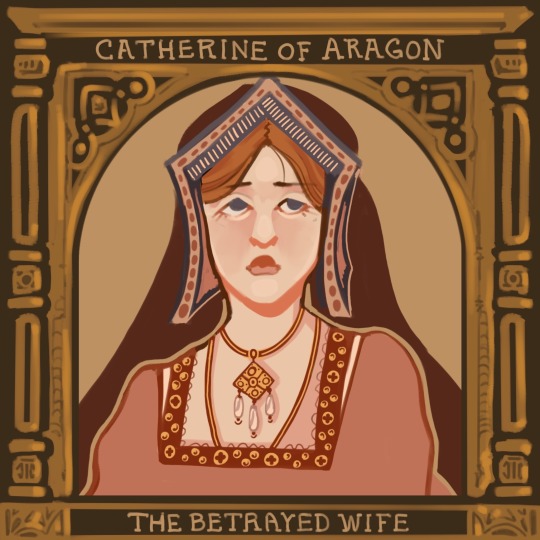
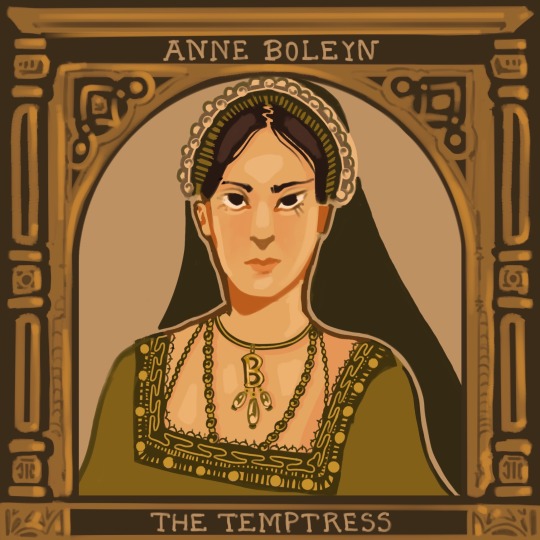


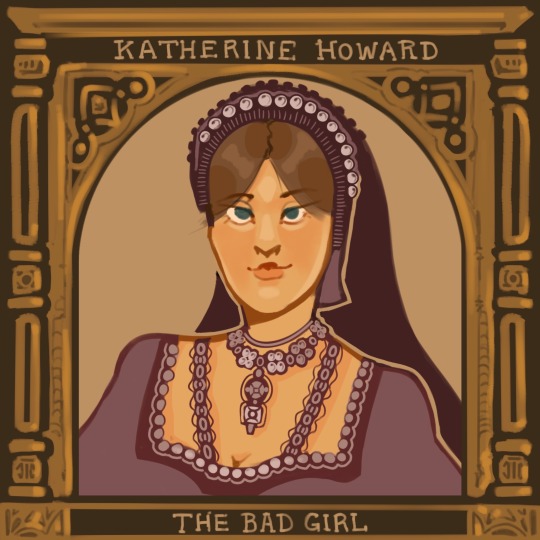
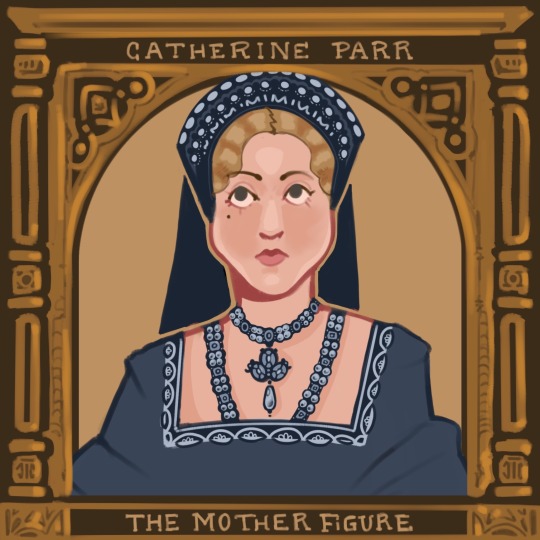
1. Catherine of Aragon (married 1509-1533)
motto: HUMBLE AND LOYAL
Even allowing for tactful hyperbole, it is clear that Catherine, […] did have the kind of youthful prettiness and freshness of appearance that charmed observers, not only the family into which she would marry. It was partly a question of her complexion: her naturally pink cheeks and white skin were much admired in an age when make-up was clumsy in execution, easy to detect and much scorned. Ambassadors abroad, describing princesses to their masters, generally emphasized the tint of the skin, carefully noting whether it was 'painted' or not. A fair complexion like Catherine's was thought to indicate a more serene and cheerful temperament than a 'brown' one. Then Catherine's hair was also fair and thick, with a reddish-gold tint, her features neat and regular in a pleasingly shaped oval face.
Perhaps Catherine's fair colouring, so far from the conventional picture of a dark-visaged Spaniard, reminded onlookers of her one-eighth of English blood: […] 'there is nothing wanting in her that the most beautiful girl should have. '
If her complexion was her chief beauty, Catherine's chief disadvantage was her lack of height. All the grace of her bearing, inculcated over many years at the Castilian court, could not conceal the fact that she was extremely short, even tiny. Years later a loyal defender had to admit that she was 'in stature somewhat mean', while adding quickly 'but bonarly [bonnie] withal'. She was also on the plump side - but then a pleasant roundness in youth was considered to be desirable at this period, a pointer to future fertility. In contrast Catherine's voice was surprisingly low and 'big-sounding' for a woman; and that no doubt contributed to the impression of gracious dignity she left on all observers, making up for the lack of inches.
2. Anne Boleyn (married 1533-1536)
motto: THE MOST HAPPY
Anne Boleyn was not a great beauty. The Venetian ambassador […] pronounced her 'not one of the handsomest women in the world'. […] Anne Boleyn was only moderately pretty.
Some of this lukewarm praise may have been due to the fact that her looks did not accord with the fair-haired, blue-eyed ideal of the time. In theory, dark looks were regarded with suspicion and Anne Boleyn's looks were conspicuously dark: she was 'Brunet' […] Anne Boleyn's olive complexion’ […] her colouring 'rather dark' or sallow 'as if troubled with jaundice', or 'not so whitely as ... above all we may esteem.' She did have a few moles, although she was hardly disfigured by them on the contrary they acted as beauty-spots. Her hair, thick and lustrous as it might be, was extremely dark […] And her eyes were so dark as to be almost black. But then the theory of public admiration was one thing - blondes were supposed to be of cheerful temperament - and the practice of physical attraction was quite another. Clearly in adulthood Anne Boleyn exercised a kind of sexual fascination over most men who met her; whether it aroused desire or hostility, the fascination was there.
The black eyes were sparkling and expressive; and they were set off by those 'dark, silky and well-marked eyebrows' […] on the subject: she knew well how 'to use [her eyes] with effect', whether deliberately leaving them in repose or using them to send a silent message which carried ‘the secret testimony of the heart'. As a result many became obedient to their power. More prosaically, the Venetian ambassador called her eyes "black and beautiful'. Her mouth, described by him as 'wide' (another theoretical disadvantage by the standards of the time), was recorded by Sander as pretty. […] Anne Boleyn was 'of middling stature' (which made her of course a great deal taller than Queen Catherine). She seems to have been quite slight or at any rate not full-breasted - the Venetian ambassador remarked that her bosom was 'not much raised' […]. But a much more important aspect of her appearance when she first came to court was her elegant long neck; this, with the deportment she had learned in France […] gave her a special grace, especially when dancing, which no one denied.
The fresh young damsel had other qualities, some more obvious than others at the moment of her arrival back in England. She had 'a very good wit', wrote Cavendish in his Life of Wolsey, another source not prejudiced in Anne Boleyn's favour? The phrase, going beyond mere intelligence, carried with it connotations of spirit and adventurousness; in other words, Anne Boleyn was good company. Like many spirited people, she had another more impatient side to her: she would display on occasion a quick temper and a sharp tongue. But of these characteristics, deplored in a woman as much as skill at singing and dancing was prized, there was as yet no sign.
3. Jane Seymour (married 1536-1537)
motto: BOUND TO OBEY AND SERVE
From other sources, it seems likely that the charm of her character considerably outweighed the charm of her appearance: […] of middle statute and no great beauty. Her most distinctive aspect was her famously pure white complexion. Holbein gives her a long nose, and firm mouth, with the lips slighty compressed, although her face son a pleasing oval shape with the high forehead then admired (enhanced sometimes by discret plucking of the hairline) and set off by the headdresses of the time. Altogether, if Anne
Boleyn conveys the fascination of the new, there is a dignified but slightly stolid look to Jane Seymour, appropriately reminiscent of English medieval consorts.
But the predominant impression given by her portrait - at the hands of a master of artistic realism - is a young woman of calm good sense. And contemporaries all commented on Jane Seymour's intelligence: in this she was clearly more like her cautious brother Edward than her dashing brother Tom. She was also naturally sweet-natured (no angry words or tantrums here) and virtuous - her virtue was another topic on which there was general agreement. There was a story that she had been attached to the son of Sir Robert and Lady Dormer, a country neighbour, but was thought of too modest a rank to marry him; even if true, the tale brought with it no slur on Jane's maidenly honour. It was told more as a Cinderella story, where the unfairly slighted girl would go on to be raised triumphantly to far greater heights. Her survival as a lady-in-waiting to two Queens at the Tudor court still with a spotless reputation may indeed be seen as a testament to both Jane Seymour's salient characteristics - virtue and common good sense. A Bessie Blount or Madge Shelton might fool around, Anne Boleyn might listen or even accede to the seductive wooings of Lord Percy: but Jane Seymour was unquestionably virginal.
In short, Jane Seymour was exactly the kind of female praised by the contemporary handbooks to correct conduct; just as Anne Boleyn had been the sort they warned against. There was certainly no threatening sexuality about her. Nor is it necessary to believe that her 'virtue' was in some way hypocritically assumed, in order to intrigue the King […]. On the contrary, Jane Seymour was simply fulfilling the expectations for a female of her time and class: it was Anne Boleyn who was - or rather who had been - the fascinating outsider.
4. Anne of Cleves (married 1540-1540)
motto: GOD SEND ME WELL TO KEEP
Let us take the actual appearance of Anna of Cleves first: for this we are fortunate in having a first-hand description, written only a few days later by the French ambassador, Charles de Marillac, who was not prejudiced in either direction, towards her beauty or her ugliness. Anna of Cleves looked about thirty, he wrote (she was in fact twenty-four), tall and thin, 'of middling beauty, with a determined and resolute countenance.' The Lady was not as handsome as people had affirmed she was, nor as young […], but there was a steadiness of purpose in her face to counteract her want of beauty.
The 'daughter of Cleves' was solemn, or at any rate by English standards she was, and she looked old for her age. She was solemn because she had not been trained to be anything else and the German fashions did little to give an impression of youthful charm in a court in love as ever with things French, or at any rate associating them with fun and delight. […] Turning to Holbein's picture, one finds this solemnity well captured: a critic might indeed term it stolidity. Besides Wotton, in his report, had confirmed that Holbein, generally regarded as the master of the 'lively' or lifelike (not the flattering) in his own time, had indeed captured Anna's "image' very well.
Of course a beautiful young woman, however stolid or badly dressed, would still have been acceptable. Anna of Cleves was not beautiful, and those reports which declared she was were egregious exaggerations in the interests of diplomats […]. But was Anna of Cleves actually hideous? Holbein, painting her full-face, as was the custom, does not make her so to the modern eye, with her high forehead, wide-apart, heavy-lidded eyes and pointed chin.
There is indirect evidence that Anna of Cleves was perfectly pleasant-looking from the later years of Henry VIII. When Chapuys reported Anna of Cleves as rating her contemporary, Catherine Parr, 'not nearly as beautiful' as herself, this expert observer did not choose to contradict her; so that the boast was presumably true, or at least true enough not to be ridiculous.
5. Katherine Howard (married 1540-1542)
motto: NO OTHER WILL BUT HIS
No confirmed authentic picture of Katherine Howard survives. The fact that Katherine Howard is the only one of Henry VIII’s wives for whose appearance we must rely properly on contemporary descriptions, gives her career an appropriately evanescent quality. The same mistiness surrounds her date of birth. She was eighteen or nineteen when the King’s roving eye first fell upon her: that is, roughly thirty years younger than he was. […] Katherine was not only small, as Catherine of Aragon had been, but diminutive: parvissima puella – a really tiny girl. If King Henry was about thirty years older than Katherine, he must have been well over a foot taller. We need not speculate further about their respective weights. The French ambassador rated her beauty as only middling (the same phrase he had used for Anna of Cleves, incidentally), but he did praise her gracefulness, and he found much sweetness in her expression; her habit of dressing à la française (as opposed to Anna of Cleves’ Germanic fashions) no doubt commended itself to him.
Even if Katherine Howard was not a beauty, she must have had considerable prettiness and obvious sex appeal (as well as – or perhaps because of – her youth) since we know that she captivated the King instantly.
6. Catherine Parr (married 1543-1547)
motto: TO BE USEFUL IN ALL I DO
The woman who brought about this cheerfulness, the new Queen Catherine Parr, was herself never described by anyone as a beauty: even the term ‘of middling beauty’ used for both Anna of Cleves and Jane Seymour by Marillac was not applied in this case. ‘Pleasing’ and ‘lively’, ‘kind’ and ‘gracious’ were the most flattering epithets ascribed to her. It is true that a difference of age and status may have been responsible for this lack – widows of over thirty were not expected to be beauties – but when Anna of Cleves indignantly exclaimed that the new Queen was ‘not nearly as beautiful as she’, Chapuys, passing on the comment, did not see fit to contradict it.
Queen Catherine Parr’s only known authentic likeness, attributed to William Scrots, shows an amiable face rather than an intriguing one; the nose is short, the mouth small, and the forehead broad rather than domed in the way that contemporaries admired. Her hair was rather similar in colour to that of Catherine of Aragon: light auburn, tinged with what Agnes Strickland in the nineteenth century would call ‘threads of burnished gold’.
But if the new Queen Catherine was not a beauty, she was neither dull nor austere. She enjoyed dancing. […] She was well set up – the tallest of King Henry’s wives – and her height would have enabled her to cut a regal figure since her conception of her role as queen consort also included a great deal of ornate dressing-up.
Bibliography:
- Fraser, Antonia. The Six Wives of Henry VIII. New York Knopf, 1993.
267 notes
·
View notes
Text
What you missed on Domina season 1, or a timeline of Julio-Claudian family drama from 38-27 BCE
The time jump between episodes 2 and 3 of season 1 is, by my calculations, about 38-27 BCE, because 38 is when Augustus and Livia got married and apparently episode 3 picks up "eleven years later"
38 - Augustus (then known as Gaius Julius Caesar divi Filius) marries Livia Drusilla, it was somewhat scandalous as they were both so recently divorced that Livia was still pregnant by her ex-husband and Augustus’ daughter by his ex-wife was barely out of the womb. Livia and Augustus never have children together but probably not for lack of trying. Augustus only ever has one biological child, Julia (later known as Julia Major or Julia Augusti Filia) whose mother was Augustus’ second wife, Scribonia. Livia only ever has her two boys by her previous husband: Tiberius Claudius Nero (later Tiberius Caesar) and Nero Claudius Drusus, known as Drusus Major. Drusus is the one she was pregnant with when she married Augustus.
37 - Marcus Vipsanius Agrippa marries Caecilia Pomponia Attica, at some point they have a daughter, Vipsania Agrippina.
36 - Antonia Minor is born to Octavia Minor, Augustus' sister, and Mark Antony. Ptolemy Philadelphus is born to Cleopatra and Mark Antony. Antony and Octavia got married in 40 BCE and quickly had their first daughter, Antonia Major, in 39 BCE. Also in 40 BCE, Antony and Cleopatra had twins: Cleopatra Selene and Alexander Helios. Both Antony and Octavia had been married before and brought children into the union: Octavia had two daughters and a son by Gaius Claudius Marcellus, and Antony had two sons by Fulvia and probably some more kids from his earlier wives. We see all three Marcelli in Domina plus one of Antony’s sons by Fulvia, Iullus Antonius. Cleopatra also had a son from a previous relationship, Ptolemy Caesar or “Caesarion,” whose father was Julius Caesar.
35 - Sextus Pompey, son of Julius Caesar's best frenemy Pompey Magnus, is executed by Marcus Titius, possibly on Antony's orders.
33 - Tiberius Claudius Nero, Livia's first husband and the father of her sons, dies. The show depicts this as him being murdered by Livia's freedwoman servant, Antigone, who is an original character in the show.
32 - Antony divorces Octavia to commit more to Cleopatra, though it's not actually clear if they got married. Octavia adopts Iullus.
31 - Gnaeus Domitius Ahenobarbus, who flip-flopped between Antony and Augustus during their schism, dies after finally deciding on Augustus' side.
30 - Antony and Cleopatra both die by suicide. Augustus probably executes Caesarion, he certainly vanishes from history at this point. Marcus Antonius Antyllus, Antony's other son by Fulvia, is definitely executed by Augustus. To round out the executions that year, Augustus orders the death of Marcus Aemilius Lepidus Minor, the son of the third Triumvir that everyone forgets about. Octavia adopts Antony’s children by Cleopatra.
~28 - Agrippa and Attica's marriage ends somehow. Do they divorce? Did she die? It's anyone's guess.
28 - Agrippa marries Claudia Marcella Major, Octavia's eldest daughter by Gaius Claudius Marcellus and Augustus’ eldest niece (less impressive than being his only daughter, but nothing to shake a stick at). In the show, they don't have kids together, in real life, they have at least one daughter, Vipsania Marcella. She went on to marry Publius Quinctilius Varus, the guy who lost the Battle of Teutoburg Forest.
Sometime in the 20s - Antony and Cleopatra's sons Ptolemy Philadelphus and Alexander Helios both vanish from the historical record, most likely because they died, though we don't know how. Their sister, Cleopatra Selene, stays with Octavia until 25 BCE when she marries Juba II of Numidia. Augustus gives them the client kingdom of Mauretania to rule. They set up a court full of artists and intellectuals and have at least two kids: Ptolemy of Mauretania and a daughter whose name no one thought to write down I guess.
Sources under the cut:
Sheila L. Ager, “Marriage or Mirage? The Phantom Wedding of Cleopatra and Antony,” Classical Philology vol 108 no. 2
Appian, The Civil Wars
Stanley M. Burstein, The Reign of Cleopatra
Cassius Dio, Roman History
Jane Draycott, “Cleopatra’s Daughter,” History Today
Valerie Hope, Maternal Conceptions in Classical Literature and Philosophy, chapter 13, “Octavia: A Roman Mother in Mourning”
Velleius Paterculus, Roman History
Plutarch, Parallel Lives: Life of Antony
Meyer Reinhold, Marcus Agrippa: A Biography
Meyer Reinhold, “Marcus Agrippa’s Son-in-law P. Quinctilius Varus,” Classical Philology vol 67 no. 2
Suetonius, The Lives of the Twelve Caesars: Life of Augustus
Suetonius, The Lives of the Twelve Caesars: Life of Claudius
Suetonius, The Lives of the Twelve Caesars: Life of Tiberius
Michael Swan, “The Consular Fasti of 23 B.C. and the Conspiracy of Varro Murena,” Harvard Studies in Classical Philology
Peter S. Wells, The Battle That Stopped Rome: Emperor Augustus, Arminius, and the Slaughter of the Legions in the Teutoburg Forest
23 notes
·
View notes
Text
I was looking at the Garden of Earthly Delights earlier and??? Bosch painted a weird little seal-esque thing???
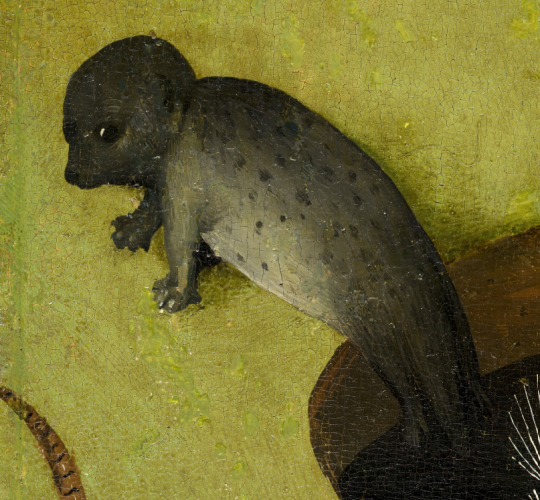
WHAT IS THAT!! LOOK AT IT!! I LOVE IT
12K notes
·
View notes
Text
Classicstober Day Four- Cleopatra Selene
“Alexander, can you hear me? Wake up. You must wake up, you must live!”
In a darkened room on the Palatine, a viper’s nest of enemies, I clutch my brother’s clammy hand and plead with his unresponsive body.
I cannot do this alone, and he is all I have left. The last of our once great house.
Memories of my childhood spring to my mind unbidden, the warmth of Egypt’s sun on my skin so different to the cold room I sit in now, reeking of sickness and looming death. My twin brother’s eyelids flicker, and in a surge of desperation to capture his attention and rouse him, I begin to speak of it.
“Do you remember Egypt, Alexander?"
read on ao3!
sources can be found in the notes at the end.
11 notes
·
View notes

